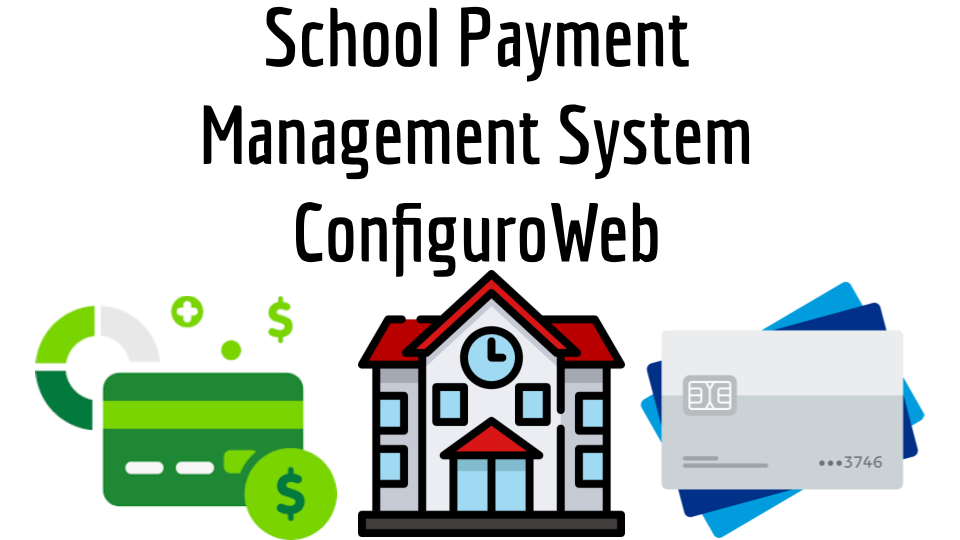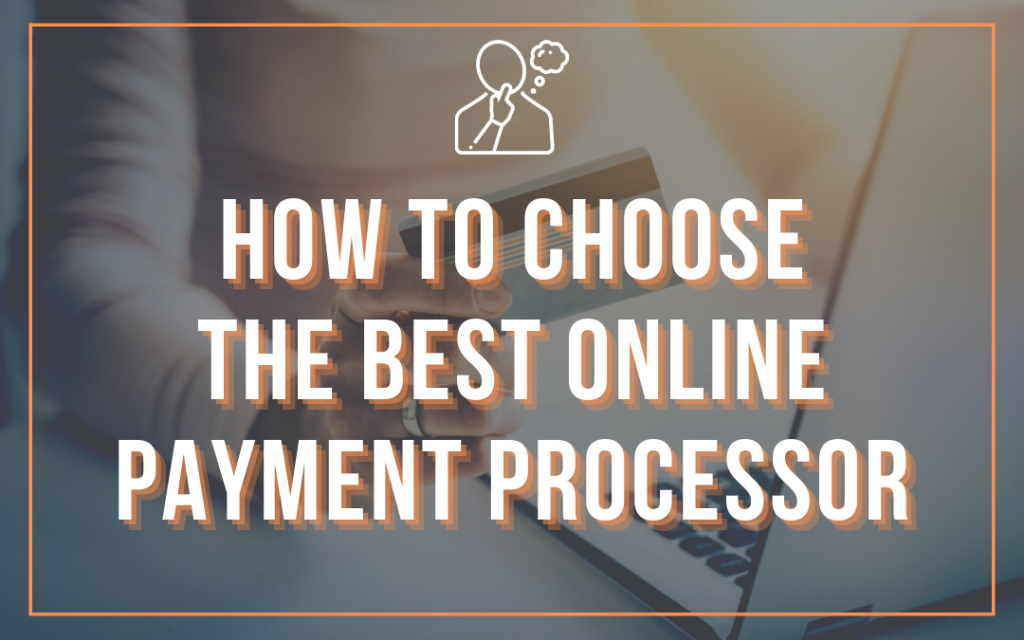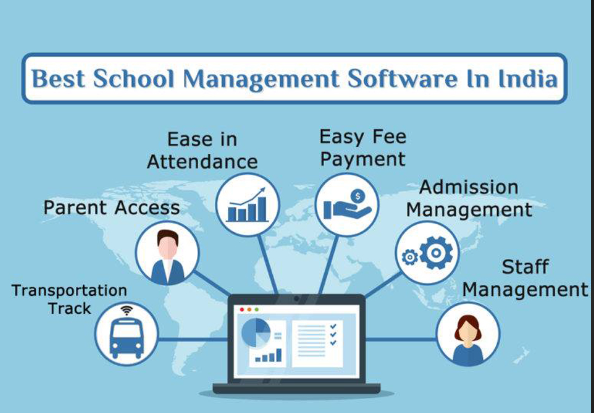AUTHOR : AYAKA SHAIKH
DATE:9/03/2024
INTRODUCTION
School administration in India faces various challenges, including managing fees, ensuring security, and maintaining transparency in financial transactions. Traditional methods of fee collection and administration are often inefficient and time-consuming, leading to frustration among parents, students, and school staff. However, with the advent of payment processor school administration software, these challenges can be effectively addressed, leading to streamlined operations and improved efficiency.
Importance of Payment Processing
One of the primary functions of payment processor school administration software is to streamline fee collection processes. By providing an online payment portal, parents can conveniently pay fees from anywhere, at any time, using various payment methods such as credit and debit cards, net banking, or mobile wallets.
Another crucial aspect is ensuring the security of financial transactions and compliance with regulations. Payment processor software employs robust security measures such as encryption and tokenization to protect sensitive financial data. It also helps schools adhere to regulatory requirements related to fee collection and financial reporting.
Payment Processor School Administration Software

The online payment portal allows parents to view and pay fees online, eliminating the need for manual cash or check payments. It provides a convenient[1] and secure platform for fee transactions, enhancing the overall payment experience.
Payment processor software sends automated reminders to parents about upcoming fee payments, reducing the likelihood of late payments and associated penalties. This feature ensures timely fee collection and improves cash flow for schools.
Customizable Fee Structures
Schools can customize fee structures based on various parameters, such as grade level, student category, or fee type. This flexibility allows for tailored fee management[2] according to the unique requirements of each school. Payment Processor and School Administration Software in India.
Reporting and Analytics
Payment processor software provides comprehensive[3] reporting and analytics capabilities, allowing schools to track fee collections, monitor outstanding payments, and generate financial reports. These insights enable informed decision-making and help optimize fee management processes. Payment Processor and School Administration Software in India.
How Payment Processor Software Benefits Schools
Time and Cost Savings
By automating fee collection and administration processes, payment processor software saves time and reduces administrative overhead. Schools can reallocate resources to core educational[4]activities, thereby enhancing productivity and efficiency. Payment Processor and School Administration Software in India.
Enhanced Parent Satisfaction
The convenience and transparency[5] offered by payment processor software contribute to increased parent satisfaction. Parents appreciate the ability to view and pay fees online, eliminating the hassle of physical visits to the school for fee transactions.
Improved Financial Management
Payment processor software provides schools with better control and visibility over their finances. By streamlining fee collection and reporting processes, schools can ensure accurate financial management and compliance with regulatory requirements.
Choosing the Right Payment Processor

Scalability
Schools should choose payment processor software that can scale with their growing needs. The software should be able to accommodate increasing numbers of students and transactions without compromising performance.
Integration with existing school management systems is essential for seamless data exchange and workflow automation. Schools should select software that integrates smoothly with their existing infrastructure to avoid data silos and duplication of efforts.
User-Friendly Interface
The software should have an intuitive and user-friendly interface that makes it easy for parents, students, and school staff to navigate and use. A well-designed interface enhances usability and adoption rates among stakeholders.
Customer Support
Responsive customer support is crucial for resolving issues and addressing queries promptly. Schools should choose a vendor that offers reliable customer support services to ensure smooth implementation and ongoing operation of the software.
Implementation Process and Training
The successful implementation of payment processor software requires proper planning, training, and support. Schools should invest in comprehensive training programs for staff and stakeholders to ensure effective utilization of the software’s features and functionalities.
Increased Fee Collection Efficiency
By implementing payment processor software, XYZ School streamlined its fee collection processes and improved cash flow. Parents appreciated the convenience of online fee payments, leading to higher compliance rates and reduced administrative burden.
Enhanced Parent Satisfaction
ABC School witnessed a significant improvement in parent satisfaction after adopting payment processor software. The user-friendly interface and transparent fee management processes contributed to a positive overall experience for parents and students.
As technology continues to evolve, payment processor school administration software is expected to incorporate advanced features such as AI-driven analytics, mobile payment options, and blockchain-based security solutions. These advancements will further enhance efficiency, security, and transparency in fee management processes.
Expanding Reach and Accessibility
With the proliferation of digital technology and internet connectivity, payment processor school administration software facilitates broader reach and accessibility. Parents from remote areas or those unable to visit the school premises physically can conveniently make fee payments online, ensuring inclusivity and participation in the education system.

Enhanced Data Security and Privacy
Data security and privacy are paramount concerns in the digital age, especially when handling sensitive financial information. Payment processor software employs robust encryption techniques and adheres to strict privacy standards to safeguard personal and financial data, providing peace of mind to parents and schools alike.
Integration with Other Systems
To maximize efficiency and streamline operations, payment processor software often integrates seamlessly with other school management systems, such as student information systems (SIS), accounting software, and learning management systems (LMS). This integration eliminates data silos and enables real-time data exchange, ensuring coherence and accuracy across various administrative functions.
Continuous Improvement and Updates
As technology evolves and user requirements change, payment processor software undergoes continuous improvement and updates to stay relevant and effective. Vendors regularly release software upgrades and enhancements based on user feedback and emerging industry trends, ensuring that schools have access to the latest features and functionalities.
Measuring Return on Investment
Schools can measure the return on investment (ROI) of payment processor software by analyzing various metrics such as time saved, cost reduction, improved fee collection rates, and enhanced parent satisfaction. By quantifying the benefits derived from the software implementation, schools can justify the investment and make informed decisions regarding future upgrades or expansions.
Ensuring Regulatory Compliance
Payment processor software helps schools ensure regulatory compliance by automating processes related to fee collection, invoicing, and financial reporting. By adhering to regulatory requirements and standards, schools mitigate the risk of non-compliance penalties and maintain trust and credibility with stakeholders
Conclusion
Payment processor school administration software plays a crucial role in streamlining fee collection processes, ensuring security and compliance, and improving overall efficiency in school administration. By choosing the right software and investing in proper implementation and training, schools can reap the benefits of streamlined operations, enhanced parent satisfaction, and improved financial management.
FAQs
- Can payment processor software be customized to suit our school’s specific requirements?
- Yes, payment processor software typically offers customizable features and settings to accommodate the unique needs of each school.
- How can payment processor software help reduce instances of late fee payments?
- Payment processor software sends automated reminders to parents about upcoming fee payments, reducing the likelihood of late payments and associated penalties.
- Is payment processor software compatible with different payment methods?
- Yes, payment processor software supports various payment methods, such as credit and debit cards, net banking, and mobile wallets, to provide flexibility to parents.
- What kind of support is available for schools during the implementation process?
- Most payment processor software vendors offer comprehensive implementation support, including training programs and technical assistance, to ensure a smooth transition.
- How can payment processor software improve financial reporting and analysis for schools?
- Payment processor software provides robust reporting and analytics capabilities, allowing schools to track fee collections, monitor outstanding payments, and generate financial reports for informed decision-making.







